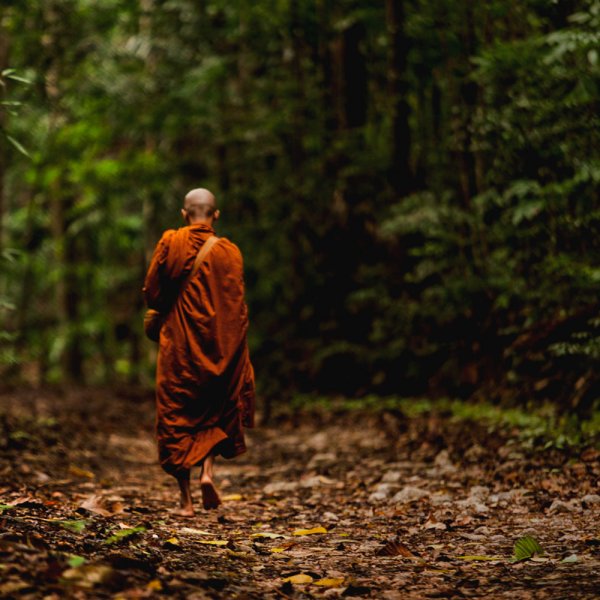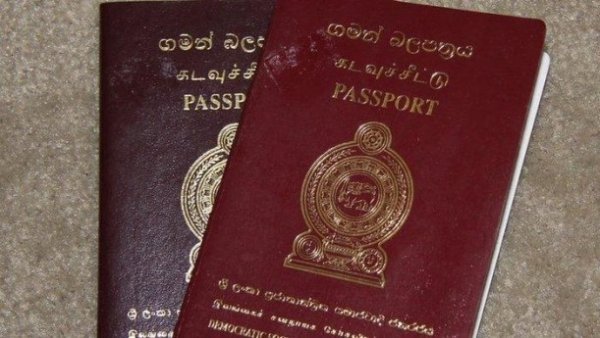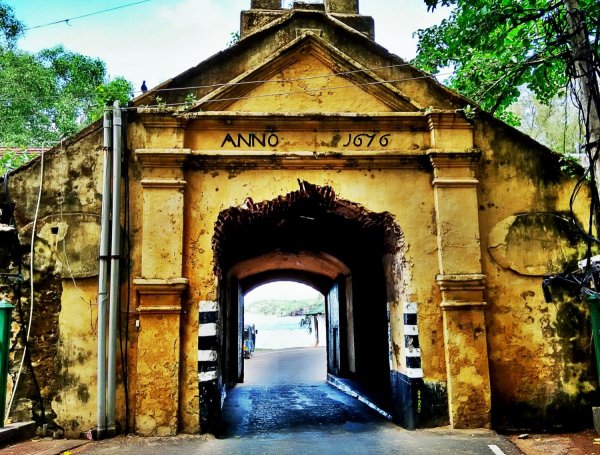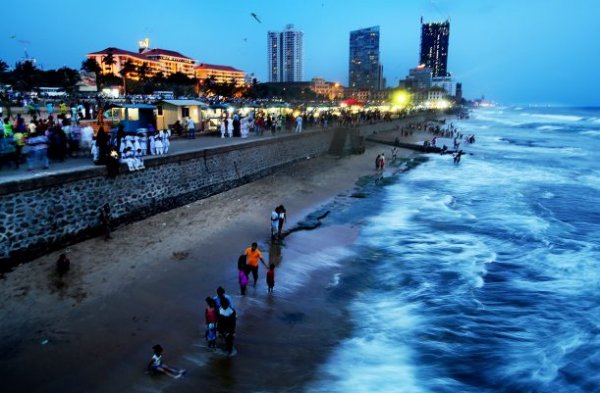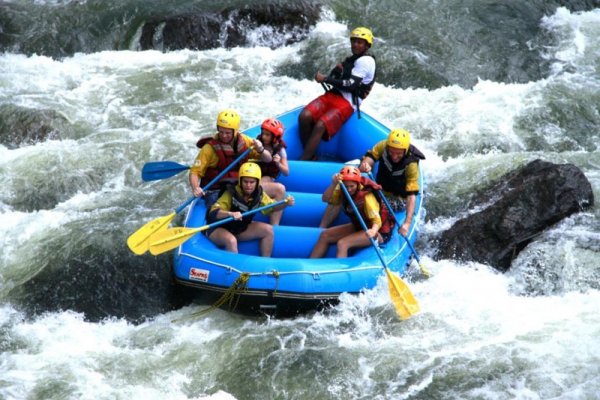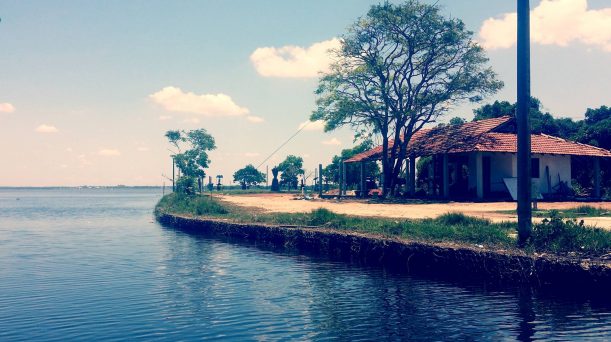
Negombo is a pretty big city just north of Colombo on the west coast. Its economy is based on its fishing industry and tourism. It’s where you go for fish, great seafood, Italian coffee, and some beach time. Basically, it’s where you go when you are too lazy to go down south. (Though that coffee is pretty good.)
But if you could leave your beer, beaches, and buffets for a moment, there are things to do in Negombo besides the usual touristy stuff. Negombo is actually home to some of the largest wetlands in the island. The Muthurajawela Marsh (try saying that five times, fast), located at the southern end of the Negombo Lagoon is 2.569.2 hectares of wet, marshy goodness. The marsh is the largest saline peat bog in Sri Lanka, and home to a very large variety of wildlife. You get there by driving on Pamunugama Road, and then turning off towards the Hamilton Canal before you reach the lagoon. You’ll need to ask for the Muthurajawela Visitor Centre. The lanes off Pamunugama Road are pretty narrow, so go slow, or you’ll end up in the canal without a paddle.
The Visitor Centre itself is a bit old, with peeling posters of birds and wildlife you’d see in the marsh. They might subject you to a nature video of the area, but we’d suggest you skip the foreplay and go straight to the marsh. The tickets are pretty cheap, going at Rs. 350 for a local and Rs. 1,100 for a foreigner, for a one-and-a-half to two-hour boat ride. You’ll get life jackets and be packed five or six to a boat with one chap driving and another being the guide for the ride. The boat then travels up the canal before getting to the marsh. There is a canopy on the boat, but it can get quite hot out there. Bring water and sunscreen.
 Heading into the trees. Image credits: Andre Howson
Heading into the trees. Image credits: Andre Howson
The canal ride is fun, but it gets really interesting once you get to the marsh. You round a bit of land that has a church built on it and then you hit this wide expanse of water bordered by trees. It’s really very beautiful. There is an abundance of birds of many varieties, fish, and tons of varieties of trees. The boat will take you around the wider stretches of water and then get in closer to the trees, sometimes right among them. There are supposed to be crocodiles in the marsh as well, but we didn’t see any. You might have to come earlier in the morning to have some better luck.
 There is a church right near the marsh, overlooking the still waters. Image credits: Andre Howson
There is a church right near the marsh, overlooking the still waters. Image credits: Andre Howson
The marsh is fed by water coming in from the Kelani river and the Dandugam Oya stream. There are 194 species of flora there, but a lot of human disturbance has caused fluctuation in the species present in the marsh. There are also 209 species of vertebrates in that area. These include fish, amphibians, reptiles, mammals, and bird. A 102 of those species are birds. So yeah, there’s a lot of birds.
 Hungry looking birds. Image credits: Cheryl Howson
Hungry looking birds. Image credits: Cheryl Howson
If you are a wildlife enthusiast, or just like to take some great nature pictures, take your time around the marsh. The guys driving the boat will stop to let you take pictures or to tell you about the plants and the animals you are seeing. At one point we were taken so deep into the mangroves that we couldn’t see the sky or any water further on, since the roots were so thick. Travelling across the water, you’d often see shoals of tiny fish skipping across the waves like little pebbles, herons giving you the evil eye, and fishing birds that would dive under the water and then emerge like some sort of bond girl, but with a fish in its beak. You are also quite likely to see water monitors lazily swimming around the edges of the marsh.
 A monitor lizard ambling along. Photo credits: Andre Howson
A monitor lizard ambling along. Photo credits: Andre Howson
There are plenty of locals who live around the Muthurajawela area and some of them make their living fishing on the lagoon and the marsh. The marsh, however, is classified as under threat. Most of the danger comes from land reclamation and development, chemical pollution of the water, sewage, and garbage disposal. The chemicals entering the ecosystem keep messing with the balance of the flora and fauna, which is a real shame, since some rare species like the gray slender loris and fishing cat are found in the marsh.
 Fishermen and more hungry birds. Photo credits: Cheryl Howson
Fishermen and more hungry birds. Photo credits: Cheryl Howson
Sadly, in December of 2015, a corroded pipeline used to carry oil from ships to a storage facility in Kerawalapitiya burst, spilling about 52,000 litres of oil into the lagoon. It was a disaster. Such an influx of petrochemicals into a delicate ecosystem does incalculable damage to the plant and animal life; damage that lasts for years. While some of the oil was cleaned up, the residue can take up to three or four years to disintegrate, according to Professor M. M. Padmalal, who spoke to the Sunday Times about the incident at the time.
Luckily, the rains played a big part in cleansing the lagoon and helping along the recovery process, and things are getting back to normal. The oil does not seem to have affected the marsh side of the lagoon and the Visitor’s Centre is still operating. Visitors to the marsh up until a few weeks ago have been giving it overwhelmingly positive reviews on TripAdvisor, with plenty of wildlife sightings, so we’re pretty lucky that the oil damage wasn’t worse.
 Going by TripAdvisor reviews, recent visitors have seen plenty of wildlife at the marsh.
Going by TripAdvisor reviews, recent visitors have seen plenty of wildlife at the marsh.
The Muthurajawela Marsh is a real gem of an ecosystem and is such a beautiful place to visit. It’s not very well known so there’s no crowd. It’s pretty cool that the marsh is opened up for visitors since part of the profits from the tickets go towards conservation and there are quite a few universities that study the ecology of the marsh. With a lot of the biodiversity of Sri Lanka focused in places like these, we hope conservation efforts continue on and protect places like these. We really can’t afford to lose any of our wetlands.

